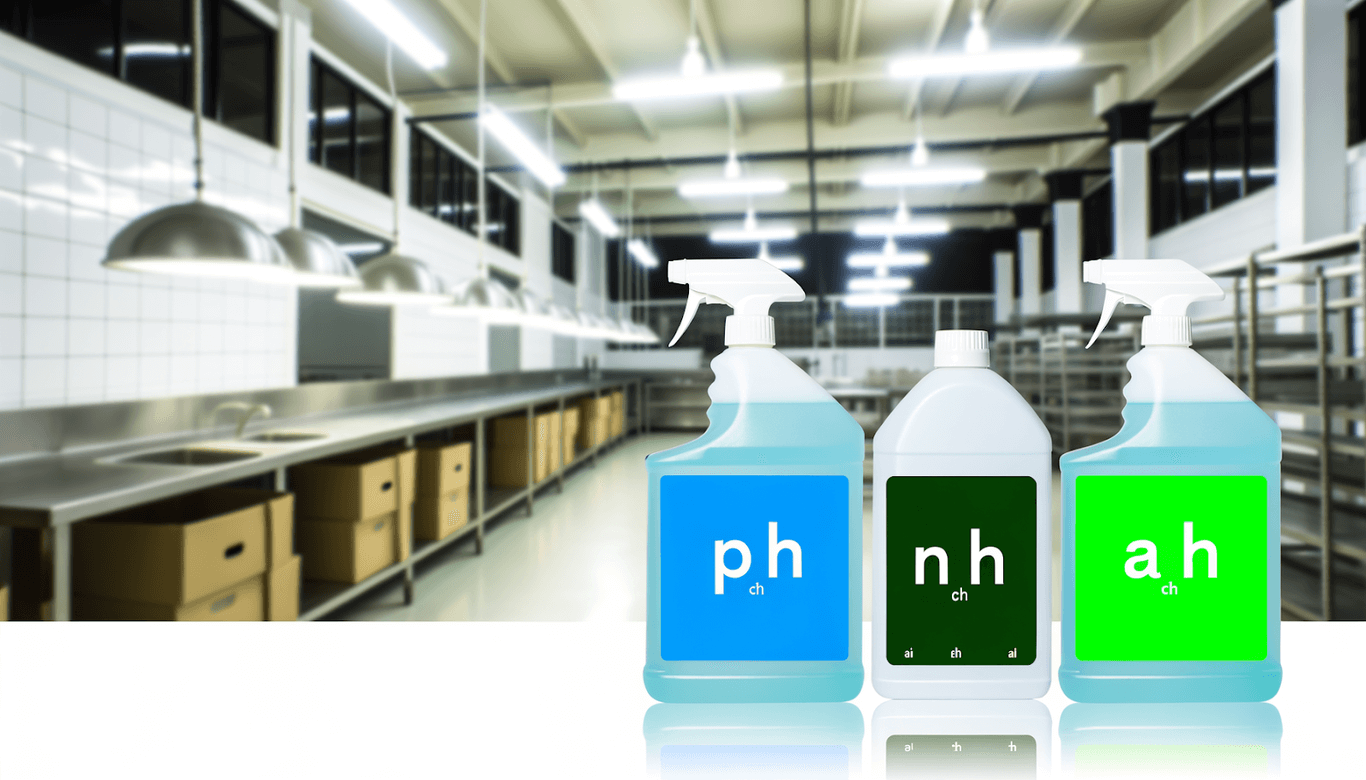
The Role of pH in Commercial Cleaning: What You Need to Know
G’day! If you’ve ever had the task of cleaning up after a big day at the warehouse or run a small business, you probably know how significant a role commercial cleaning chemicals play in keeping things shipshape. Yet, there might be a crucial detail you’re overlooking: the pH level of these cleaners. It might sound a bit scientific, but I promise it’s nothing you can’t handle! Understanding the pH can drastically affect the performance of cleaning chemicals and the safety of your work environment. Let’s dive ferociously into the world of commercial cleaning chemicals and uncover the mysteries of pH levels.
Understanding pH and Its Importance
The term “pH” refers to the potential of the hydrogen scale, which measures the acidity or alkalinity of a substance. Ranging from 0 to 14, a neutral solution sits at about 7. Anything below 7 is acidic, while anything above is alkaline. So, why does this matter in commercial cleaning? Well, it determines the chemical’s effectiveness on different surfaces and at tackling a variety of stains and residues.
Types of Commercial Cleaning Chemicals and Their pH Levels
It’s pivotal to select the right cleaner based on its pH level to ensure thorough cleaning without damaging the surfaces:
1. Acidic Cleaners
These cleaners have pH levels on the lower end of the scale. They’re fantastic at breaking down inorganic soils like minerals, rust, and scale. Bathrooms, tiles, and industrial kitchen equipment often benefit from acidic cleaners as they can dissolve mineral deposits effectively. However, using them requires caution, as they can corrode metals and cause damage to some surfaces if not used correctly.
2. Neutral Cleaners
As the name suggests, neutral cleaners maintain a pH around 7. They’re ideal for everyday cleaning and safe for most surfaces, including floors and countertops. They’re particularly useful in environments where the buildup of residues isn’t extreme, but maintenance of the surface appearance is crucial.
3. Alkaline Cleaners
With pH levels greater than 7, alkaline cleaners excel in breaking down organic matter such as oils, fats, and grease. They’re your go-to in tackling heavy-duty, greasy messes and are widely utilised in industrial settings like manufacturing and food processing.
The Impact of pH on Cleaning Effectiveness
The pH level directly impacts how well a chemical interacts with the dirt or residue it’s meant to eliminate. Here’s a quick breakdown:
- Acidic Cleaners: Target calcium deposits, metal oxides, and mineral-based stains. Fantastic for ceramic and fibre surfaces usually found in toilets and bathrooms.
- Neutral Cleaners: Suitable for daily maintenance cleaning where surface safety is a priority. Great for tiles, stone, and sealed wood surfaces.
- Alkaline Cleaners: Handle organic soiling like oils and fats thoroughly, making them perfect for kitchen-related environments or industrial machine cleaning.
How to Choose the Right Cleaning Chemical Based on pH
When looking for the right cleaning solution, consider the following:
Identify the Surface and Soil Type
Start by considering what sort of mess or residue you’re dealing with and the surface it’s found on. Matching the right pH level within the cleaning chemical to these conditions will enhance effectiveness and prevent surface damage.
Safety Considerations
Some acidic and alkaline cleaners can be quite harsh, so always check the safety data sheets (SDS) to determine the necessary protective equipment. Gloves, masks, and goggles might seem overkill, but trust me, they’re life (or skin) savers!
Environmental Impact
We share this beautiful world, so give a thought to environmentally friendly options when you can. Some companies now formulate cleaning chemicals that reduce environmental impact yet provide effective results, achieving a win-win situation.
Conclusion: Navigating the Sea of Cleaning Chemicals
Understanding the role of pH in commercial cleaning can massively influence your cleaning outcomes. From acidic solutions neatly slicing through mineral buildups to alkaline warriors battling grease and grime, choosing the right chemical based on pH isn’t just about cleanliness; it’s about safety and protecting your investments. Next time you’re tasked with a big clean-up, you’ll be able to make informed decisions that make your life easier and your workplace cleaner.
Let’s tackle that grime with newfound knowledge and continue to make our working environments safe and inviting with the help of the proper commercial cleaning chemicals. Your cleaning game will be top-notch!
